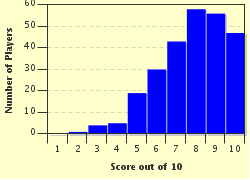Quiz Answer Key and Fun Facts
1. Quite a few improvements that appeared on the scene during the early Middle Ages were weapons of war. The crossbow is regularly quoted as one of these. This wasn't new at all in fact. Which earlier civilisation regularly made use of the crossbow?
2. Western Europe's High Middle Ages (usually dated as c. 1000-1300 or c. 1050-1350) saw the rapid spread of a structure which was both used to grind grain and to pump water. What was it?
3. Another most interesting contraption that really took off during the high middle ages was a device that could accurately predict the movement of the sun, moon, planets and stars. What was it called?
4. The construction of ships were improved during the European High Middle Ages when the rib and plank method of building was introduced. What method did this replace?
5. A weapon of war that has plagued mankind ever since first introduced made its regular appearance in Europe by the late Middle Ages?
6. Mighty cathedral building continued to peak during the High Middle Ages in western Europe. One invention in particular allowed for their massive construction. These were known as flying *what*?
7. By the late Middle Ages in Europe, what device had been added to windmills to increase their efficiency even further?
8. The late middle ages also saw the manufacture of iron making in Europe take a giant step forward with which new invention?
9. The traditional distaff for spinning wool was replaced with which device during the late Middle Ages in western Europe?
10. Perhaps most important of all for the mind of man, which other new device made its appearance during the late Middle Ages in Europe?
Source: Author
Creedy
This quiz was reviewed by FunTrivia editor
bloomsby before going online.
Any errors found in FunTrivia content are routinely corrected through our feedback system.


